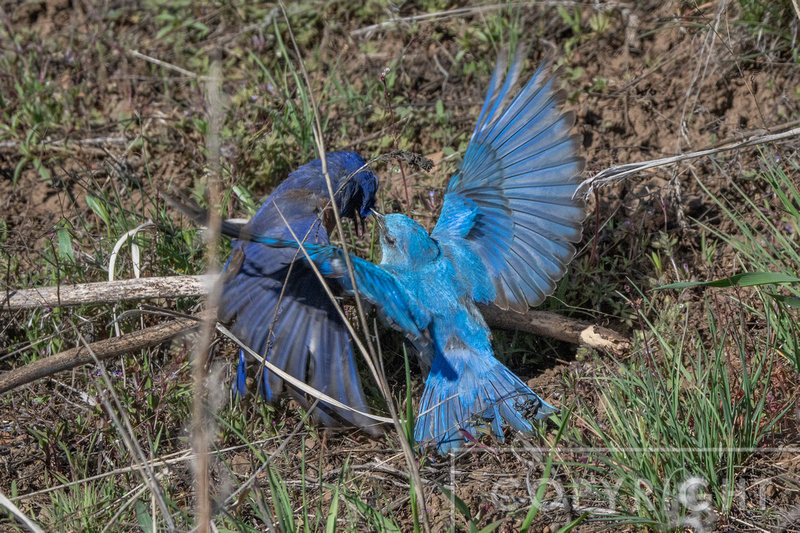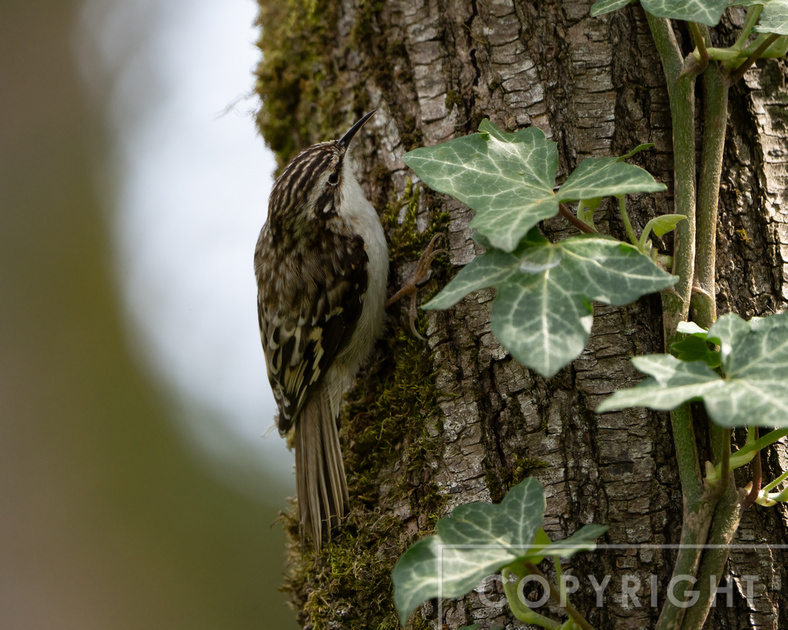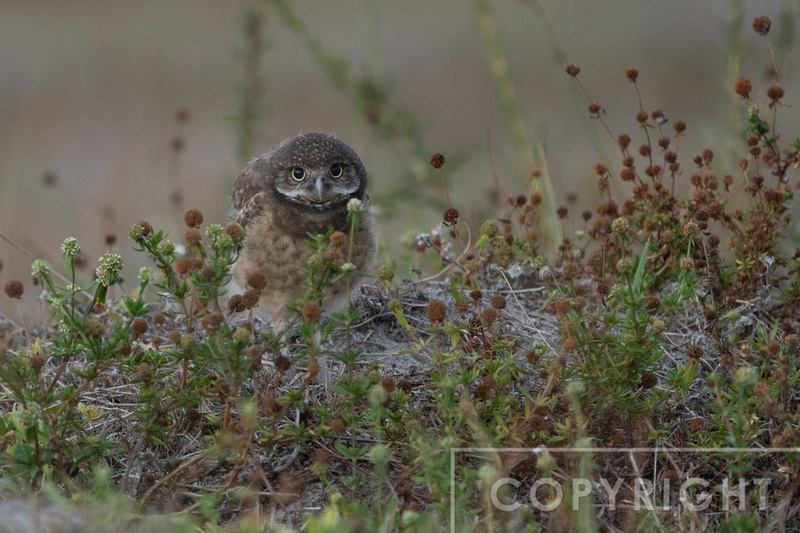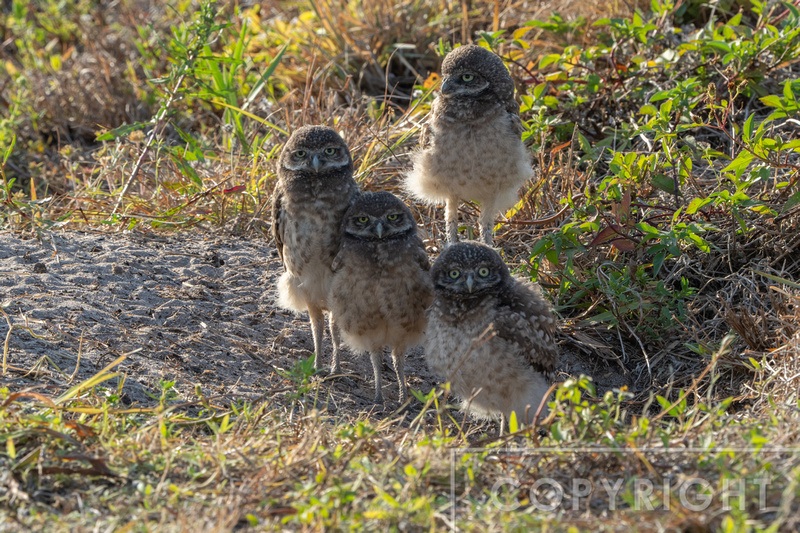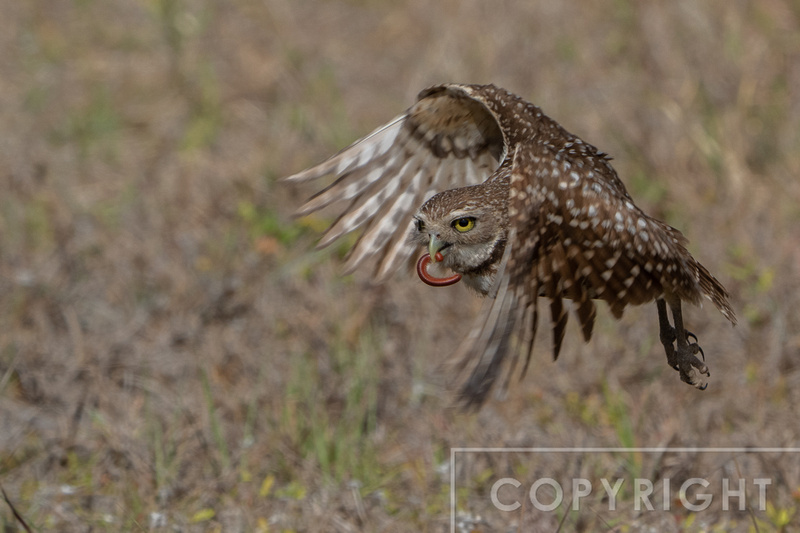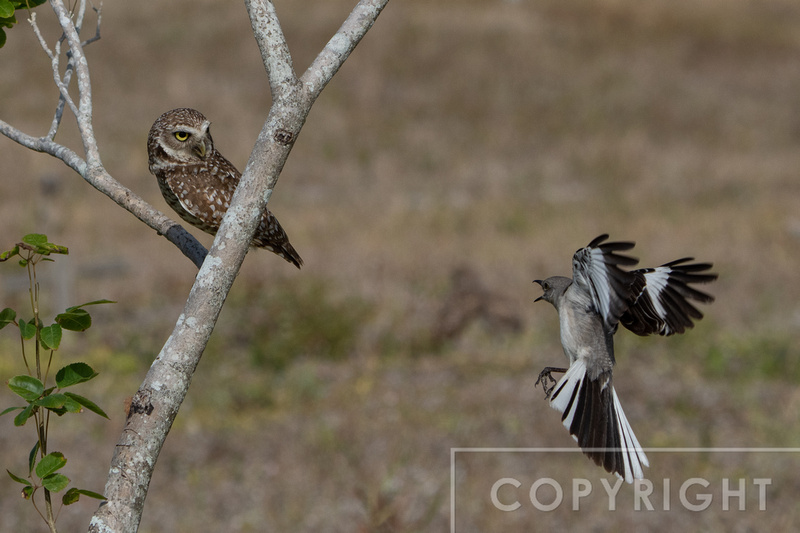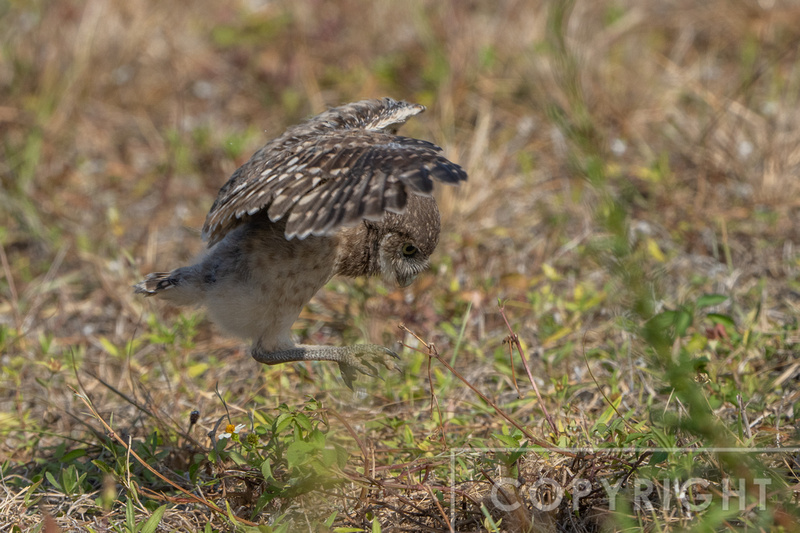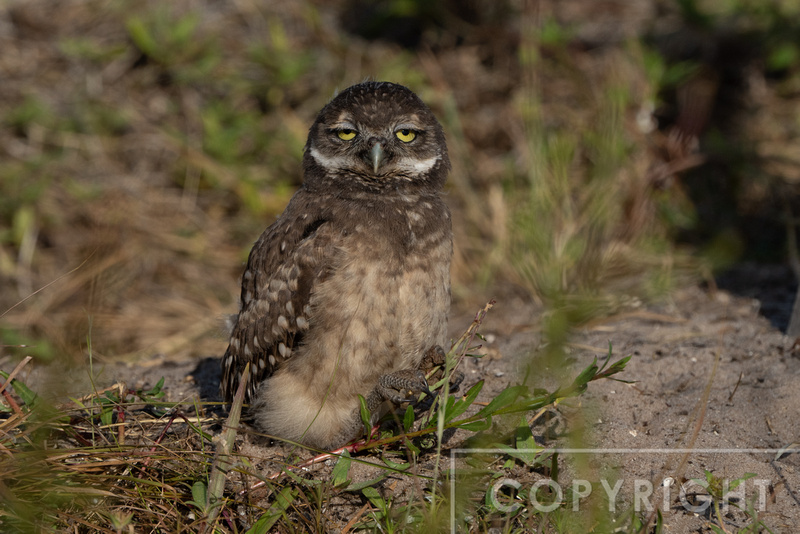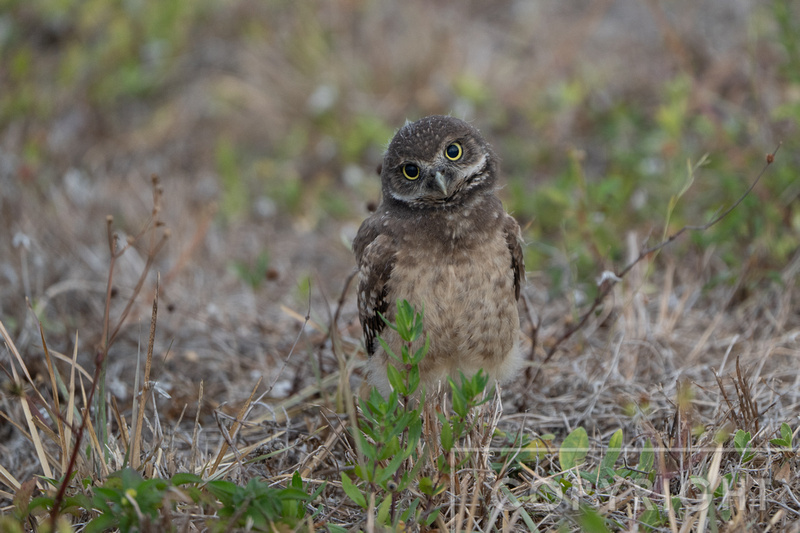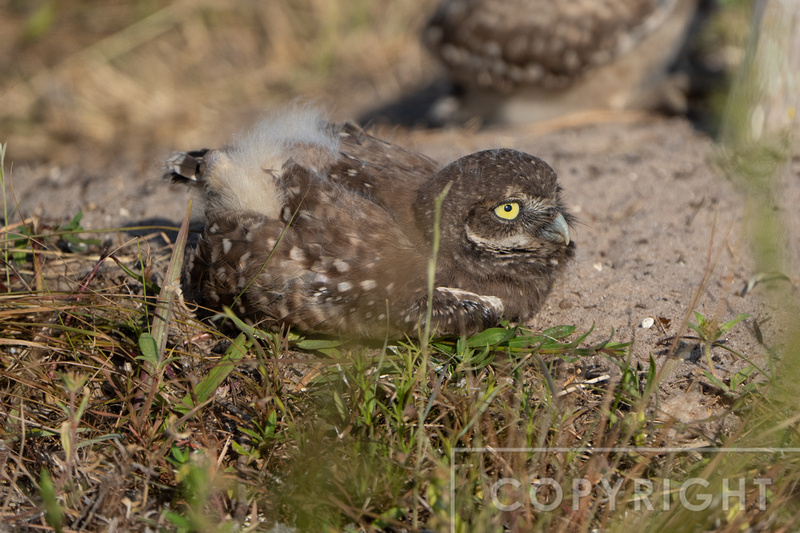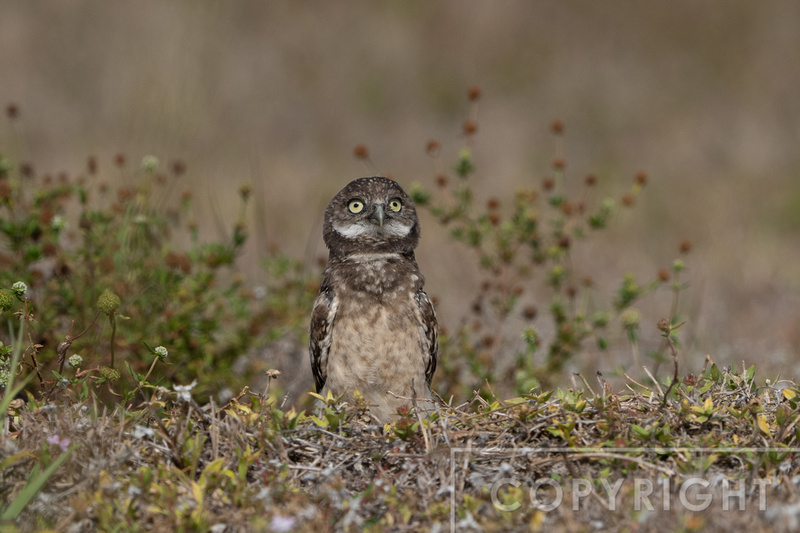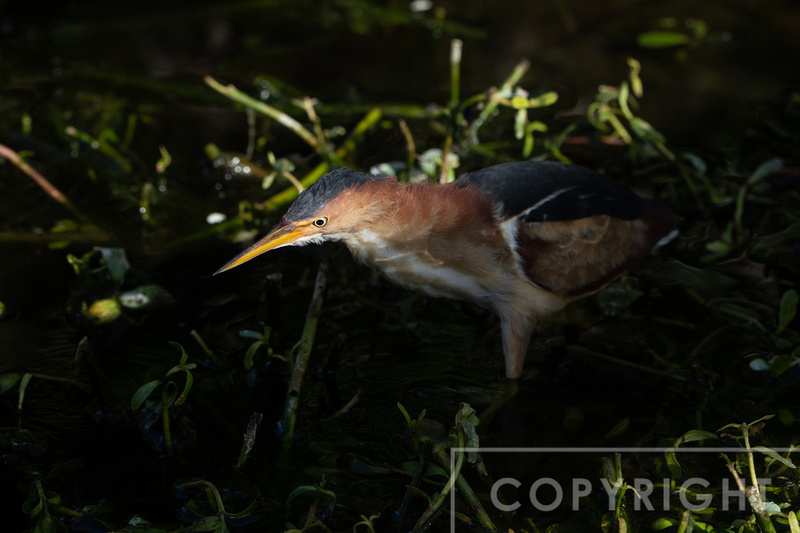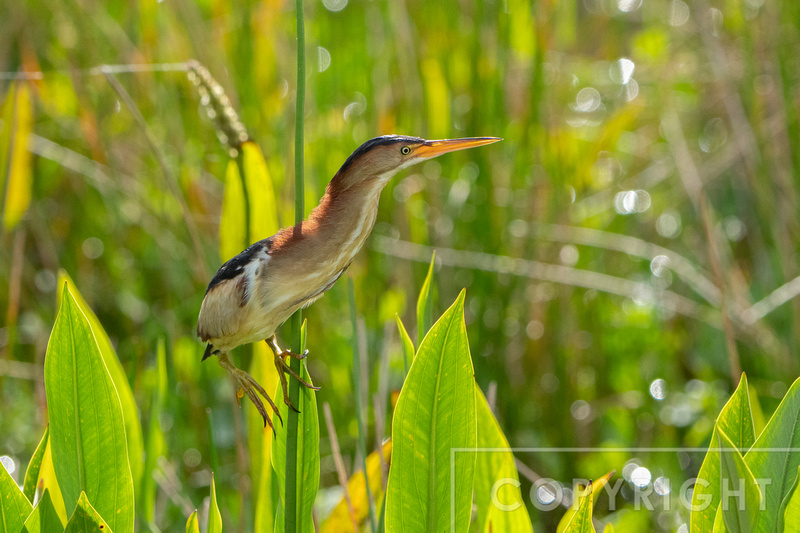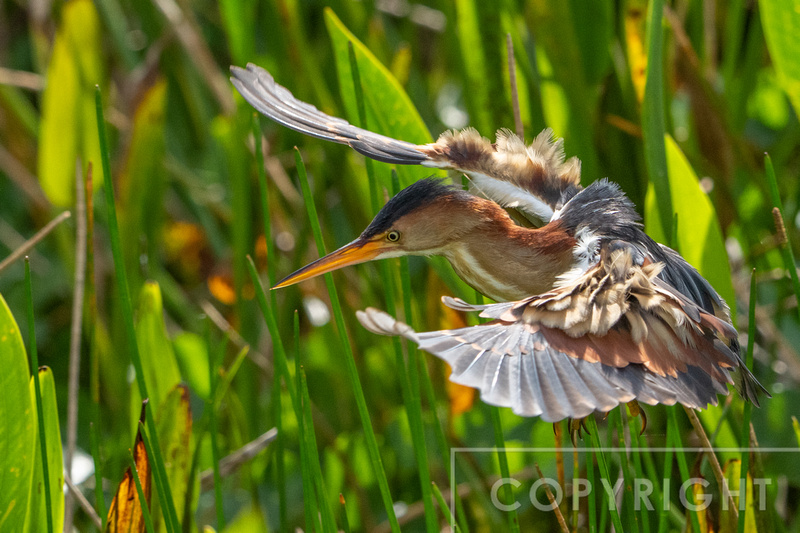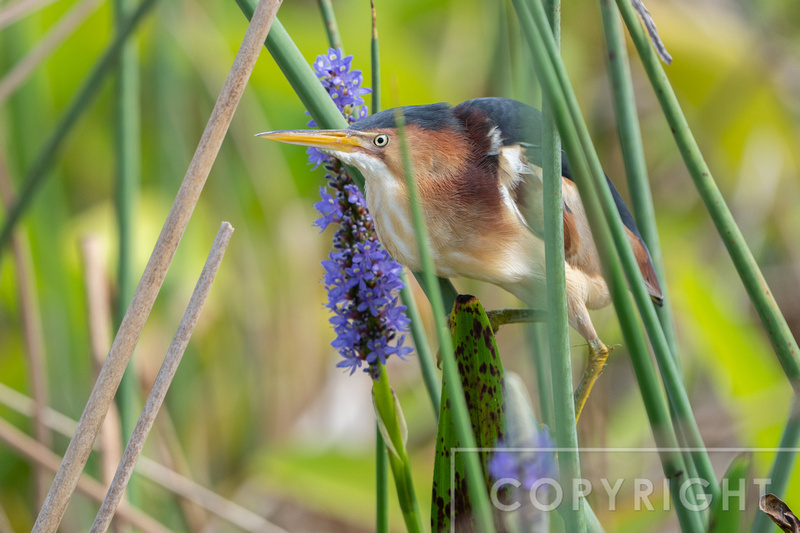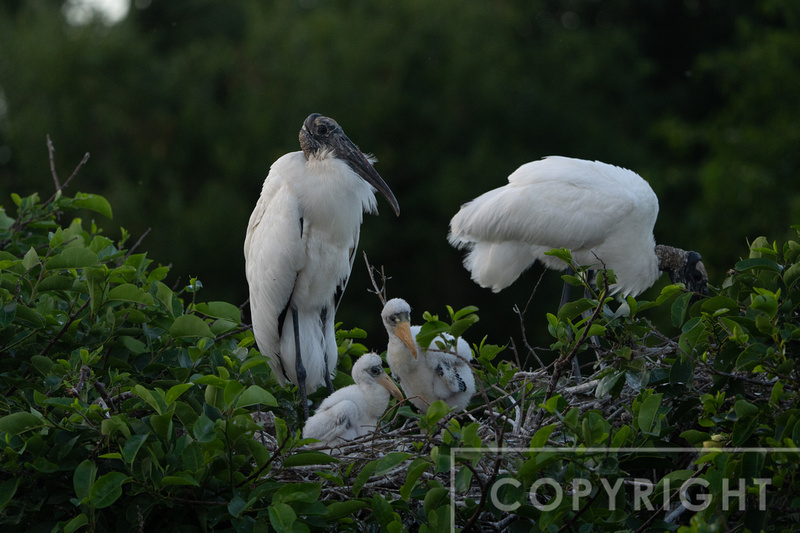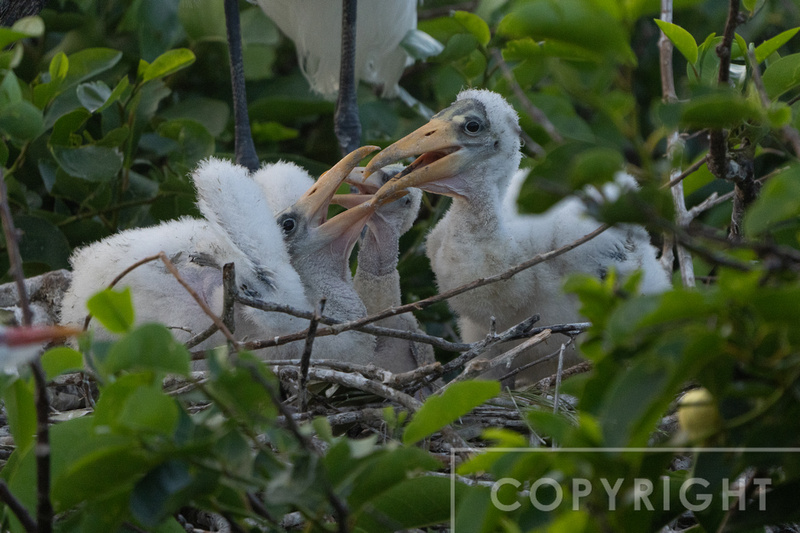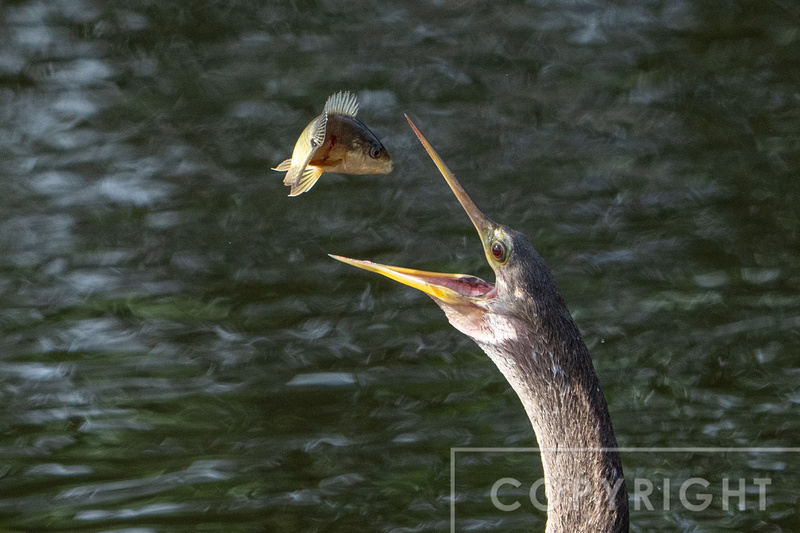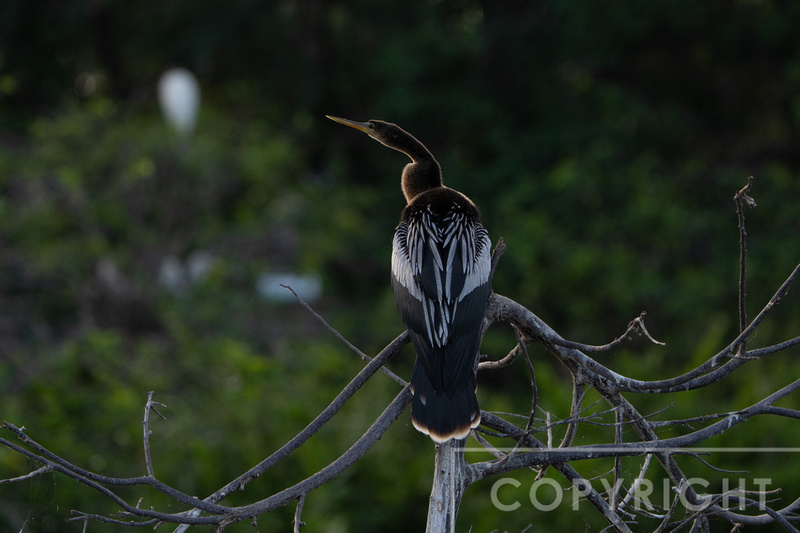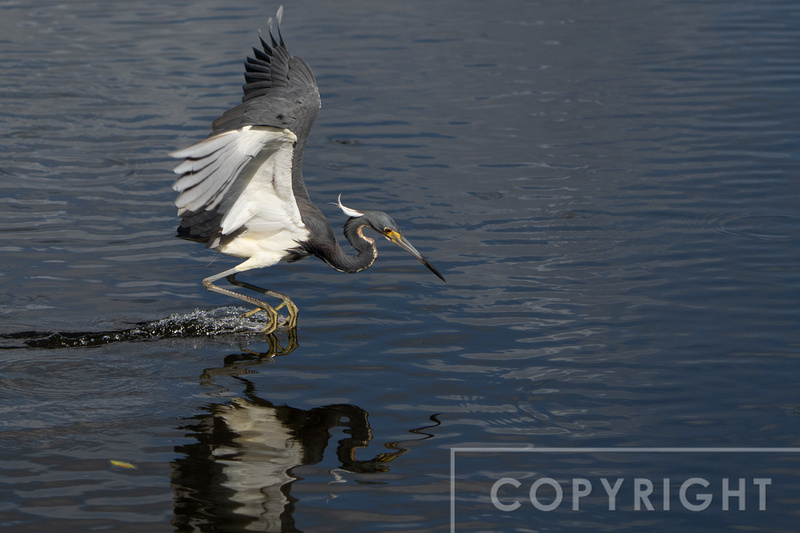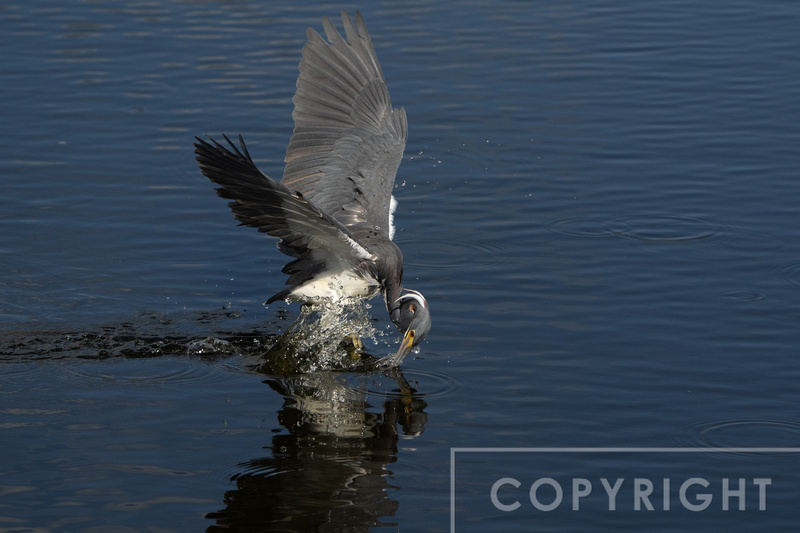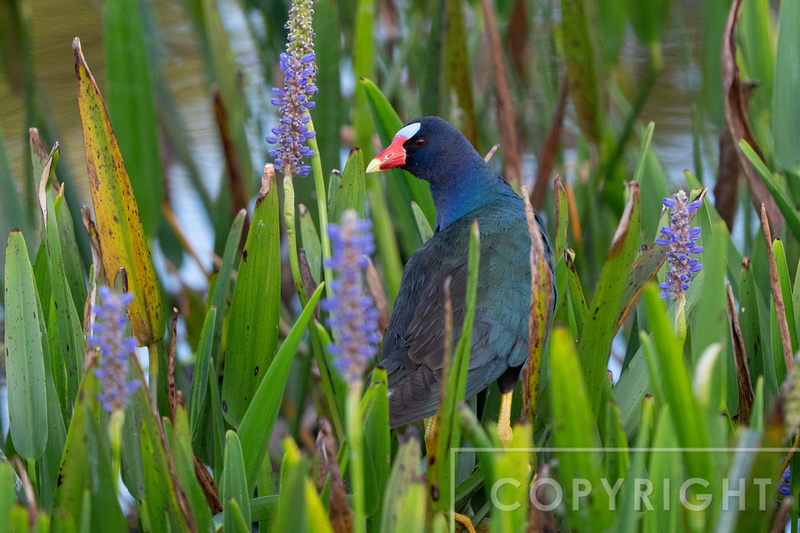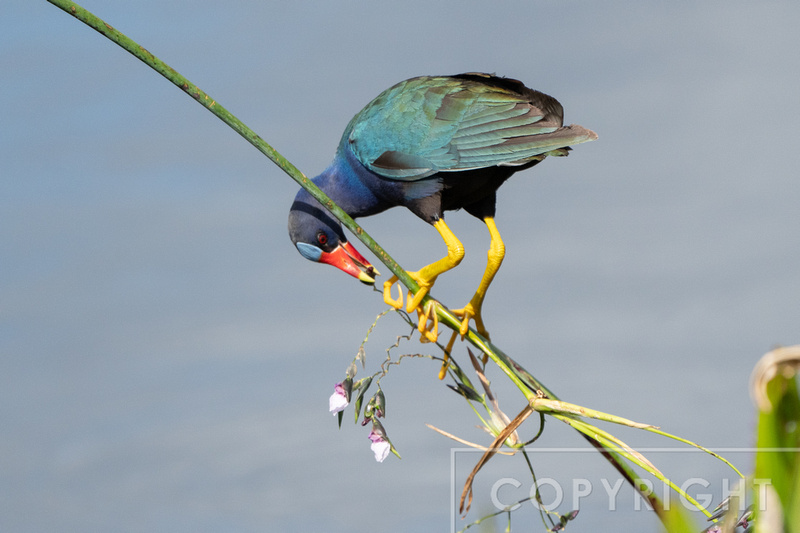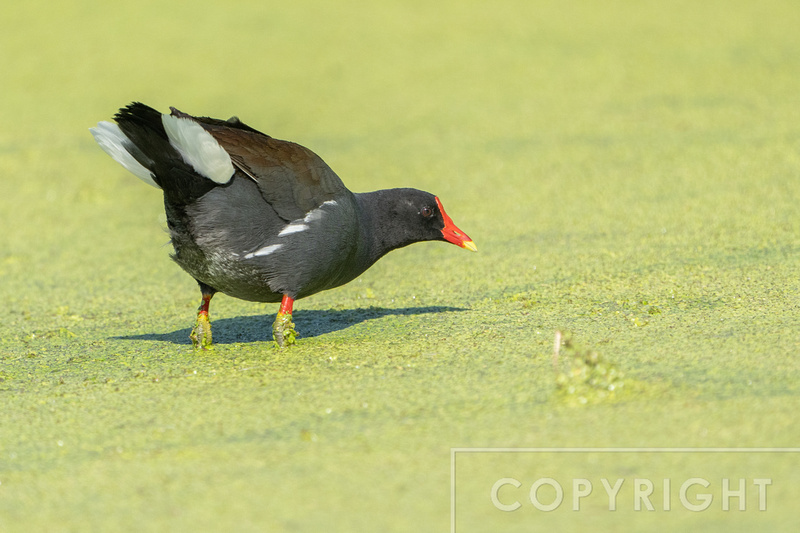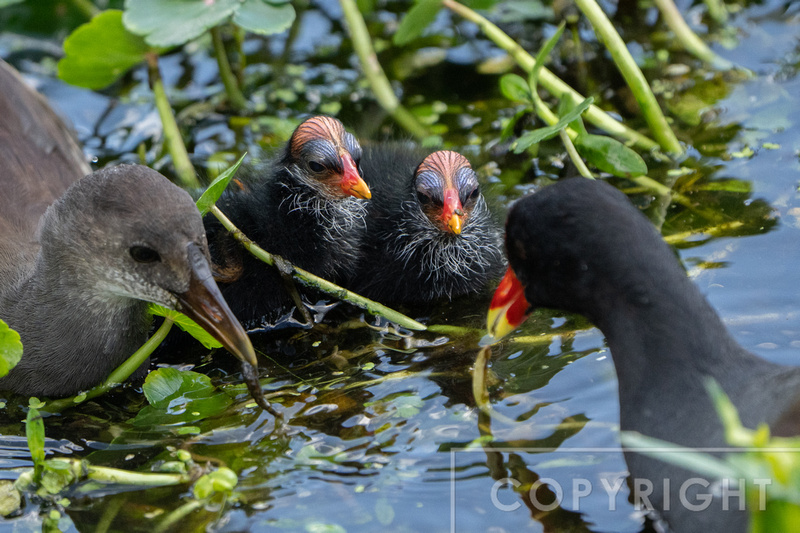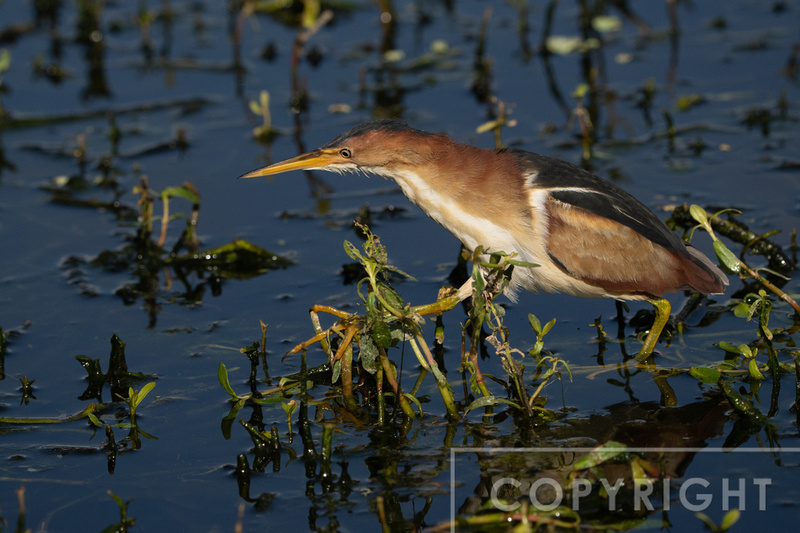Bluebird battleI was in Eastern Washington for the early stages of the Spring migration. The Bluebirds had arrived, but were still establishing their territories. The Yakima Valley Audubon has set up Bluebird nesting boxes all along Umptanum Road outside of Ellensburg, and there was stiff competition for the boxes. I saw one box where the competition came to blows. A Western Bluebird pair had claimed a box, but a Mountain Bluebird pair very much wanted it. At first they would go to their corners. The Western blurbirds had clear possession of the box:
Brown Creeper nest buildingBrown Creepers build their nests behind pieces of peeling bark. I found this nest building activity in a local park in the spring of 2021. Getting a good portrait of a Brown Creeper is challenging since they live in dense forests. I finally nailed one good portrait:
Burrowing Owls of Cape Coral, FloridaI have traveled to Eastern Washington several times just to look for Burrowing Owls. They are tough to see, because they are often in agricultural fields far from the road. The population of owls are declining in many areas due to degradation of habitat. The city of Cape Coral in Florida has made it a policy to protect these birds. They provide the proper habitat all over town, and if you are lucky enough to have the owls nest on your property, you do not have to pay property tax. It is a great incentive for homeowners to protect the birds. I traveled to Cape Coral on my last day in Florida. I was in Eastern Florida the night before, so I had to get up at 3 am in order to get to Cape Coral by sunrise. It was well worth the effort. I first went to the public library where I knew of a number of nests. Right off I found 6 or 7 nests. I saw birds in two of the areas, but no chicks. I then walked the neighborhood to scope out other nests. Across the street from the library I found 3 nests. All were occupied, but only one had chicks visible. Apparently there were chicks in one of the other nests, but for some reason they were much more skittish than the first one I found. I spent the next 3 hours watching the chicks. At first I was in the street, not wanting to tresspass on the property, but the homeowner came out and invited me to view the nest from his yard. Thank you Peter!! The Cape Coral Owls are known to have some highly variable eye color, but the nest I photographed had the usual yellow eyes. When I first arrived, the sun had just risen, so their pupils were fully dilated.
Least Bittern karmaI saw many new birds on my trip to Florida last week. Most I had heard of before, and very much wanted to see. The Least Bittern, on the other hand, was not something I had heard about, likely because it is very secretive and very hard to see. It is a tiny bird, maybe half the size of a Green Heron. While touring the Wakodahatchee wetlands, I was told to watch out for this tiny bird. I was told that the best way to find it was to look for the dense cluster of photographers. When one is spotted, everyone crushes in to see it. I ended up spotting this bird about 4 or 5 times on this trip. Each time I found it on my own, which was truly amazing to me. It kept appearing wherever I was. I decided that I must have good Least Bittern karma. My first view was right by the boardwalk. He flew in and was foraging in the shallow water.
Wakodahatchee wetlandsI have visited 100's of birding hotspots, but this is the most amazing place I have ever seen. It would be interesting to see it in the non-breeding season, but at this point in time, it is an incredibly active area with 1000's of nesting birds. The predominant nesting species are Wood Storks, Great Egrets, Cattle Egrets, Anhinga, Tricolored Heron, Green Heron, Great Blue Heron, Common Gallinule, Purple Gallinule, Least Bittern, Grackle and Alligators. The area is owned by the city, and is part of their water management. They built a boardwalk to allow visitors to view the birds without disturbing them. Their efforts were wildly successful. First, the Wood Storks, very funny looking adults and chicks!
« Older Posts
Nature by Nancy
|



